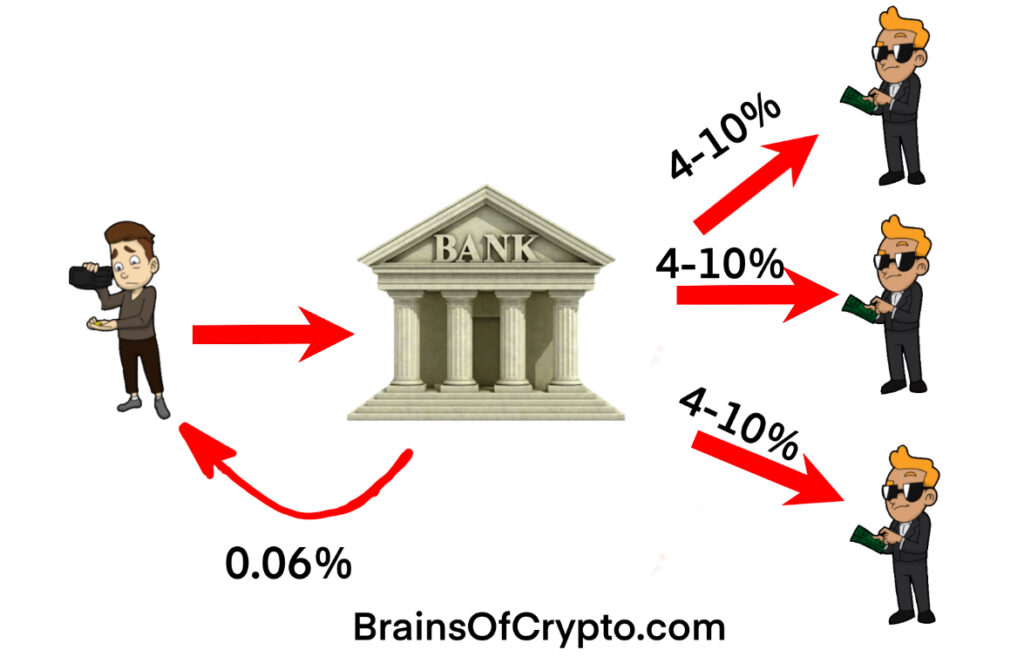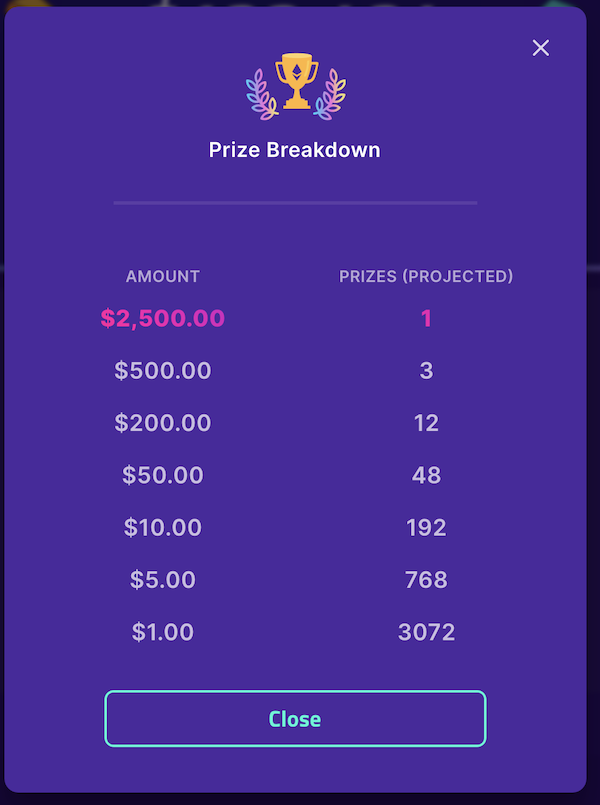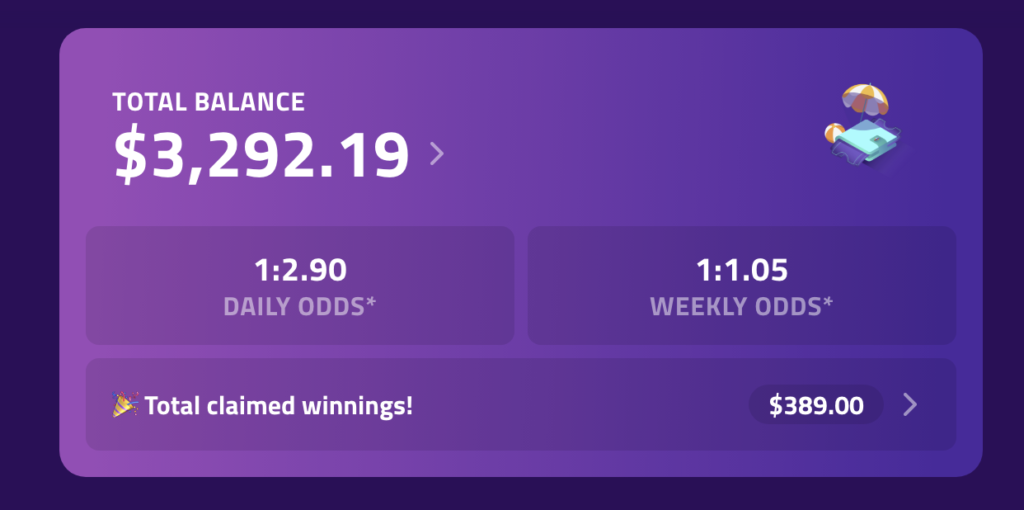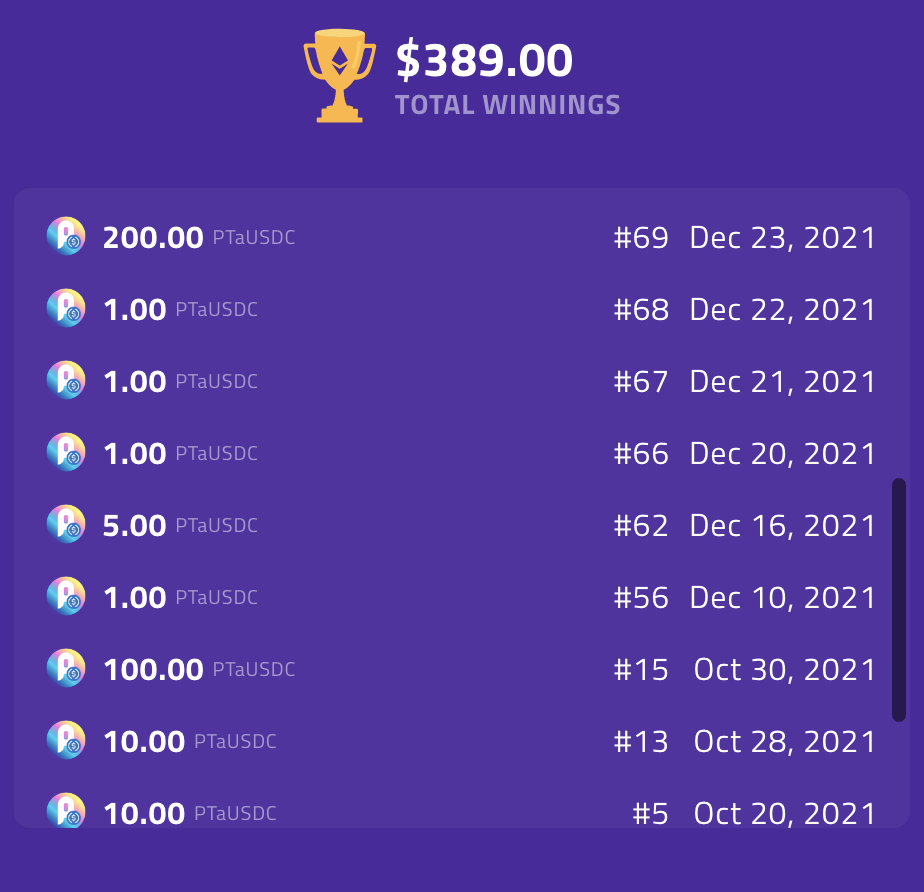After reading this article, you will have a firm grasp of PoolTogether and how it all works.
What Is PoolTogether? PoolTogether is a crypto-powered savings protocol that is based on Premium Bonds. It allows you to save money and have a chance to win every week. It’s kinda like if you were to buy a lotto ticket from a convenience store, but instead of it being worthless after that night’s drawing, it also works in the next drawing and on and on.
Oh yeah, at any point in time you can go back to that store and sell the ticket back to the store and get back your original deposit. That’s where the idea of the “no loss” comes in. If you deposit 1 USDC or 10,000 USDC, you can get it back whenever you want.
Okay but that seems too good to be true, right? I mean why would they allow us to keep having the chance to win? How is that even possible? I’m glad you asked!
As of the time of writing this, January 17, 2022, PoolTogether is currently on Version 4 and it keeps getting better.
I want you to think about your current savings account. If you think about traditional banking, you put your money into a savings account and they’ll give you a % return, right? For the majority of these banks, you’ll be getting on average 0.06% APY on your money according to the FDIC.
That means if you had $100,000 in an average savings account, you would be earning $100,000 x 0.06% per year = $60. That’s right, you would earn $60 a year for loaning your $100,000 to a bank in a traditional savings account.
The bank will then loan out your $100,000 and earn more than that, which is how they make money. Maybe they take your $100,000 and loan it out and they earn 4% per year. In that case, they would earn $4,000 from that money. Then if you subtract the $60 that they pay you, they’ll have profited $3,940 for the year for lending out your money. This is why DeFi is so interesting. It allows you to become your own bank.

In this drawing I made (I know, it’s not the best) you can see that you put your money into the bank, they then loan it out and make the 4-10%, while paying you about 0.06% as mentioned above.
How PoolTogether Works
- Deposit money for a chance to win
- Prizes are awarded each week
- Even if you don’t win, keep all of your money!
Is PoolTogether Legit?
Yes, PoolTogether is legit. Over time the protocol has continued to improve and has been delivering daily payouts to people who win the pools. Basically people buy tickets to the lottery, and the interest earned forms the prize pool. You keep your initial deposity and each drawing that you enter you have a chance of winning.
The PoolTogether v4 really is an incredible improvement over what they had in earlier versions. You can deposit USDC on the polygon mainnet so you have very low transaction fees compared to the Ethereum Network. Each day the PoolTogether v4 has winners, which you can see in the chart below.
The Current PoolTogether Prize Breakdown for PoolTogether V4

How Does PoolTogether Make Money?
The PoolTogether protocol is an open-sourced and decentralized piece of software that operates on the blockchain. This means that no institution or single individual controls it. The protocol is controlled by the people who own the POOL tokens.
Guess what that means? PoolTogether itself doesn’t make money, the users of the platform do through winnings.
Where does the prize money come from?
The PoolTogether prizes are generated from interest earned on the deposited funds. When someone (like you or me) make a deposit into PoolTogether, that deposit is automatically routed over to something like AAVE to begin earning interest. Protocols like AAVE are what’s known as “Fully liquid” which means the deposits can be withdrawn at any time. Compare this to a traditional bank which tends to keep 10% or less of the deposits available. If you’ve ever tried to withdraw a large sum of cash from your bank, you’ll most likely be stopped because they need to get the money from elsewhere.
Over on AAVE, interest accrues about every 15 seconds. Anyone who is to borrow from AAVE must deposit collateral that is greater in value than what they are borrowing. This is to protect the deposit and make sure than loans are never defaulted on. PoolTogether is known as a “non-custodial protocol”.
What is a non-custodial protocol? A non-custodial protocol means that no one has the ability to control the funds deposited. All of these deposits and withdraws are conducted automatically by smart contracts that make up PoolTogether’s protocol.
Pretty cool, huh?
As of January 20, 2022 I have $3,292.19 USDC in the v4 pool. I have won $389 USDC during the time period that I have been involved. Drawing 1 of the v4 pool started October 16, 2021. So that makes it almost 3 months for my earnings.

I personally have won $389 USDC during the time period that I have been involved. I have been slowly adding a bit to my balance over the last few months, so I’m not 100% sure what the correct % is… but using basic math I’m at around an 11.8% ROI over the time I’ve had my money in this pool. I did have one day where I won 200 and another when I won 100. So if we are to remove those (to be super conservative in estimates) We’d have only 89 in winnings.
We’ll also remove that $300 I won, so it puts us at $2,992.19 as the total balance.
Still, $89 from an initial deposit of that $2,992.19 is 2.97% return over the 3 month time period. That’s a lot better than the 0.06% from a traditional bank, right?
My $2,992.19 over the course of a year would have earned me $1.79 at the end of the year. This is making me wish we had this stuff sooner.

Okay that seems too good to be true, right?
Take a look at this example where Kris Kay put $8,000 into PoolTogether from October 19, 2021 until November 19, 2021 and ended up winning $540 in that month. That’s a $540 return from an initial deposit of $8,000… or 6.7% in a month!
Compare that with the examples up above from a traditional savings account and you can see just why we’re so excited about this concept.
While there are no guarantees in anything (you know this), consider if that 6.7% for the first month actually happened. We aren’t saying this will happen, in fact, it’s likely not to happen. But, if you had $100,000 inside of PoolTogether and you happened to win, getting 6.7% that first month, that would mean you would have won $6,700.
Even if you only had that for the year, it would still earn you $6,640 more than the bank would have paid. Now remember, this is NOT LIKELY TO HAPPEN. It’s simply an example to get your mind to understand just what this could potentially mean.
I don’t know about you, but to me it seems like its a great idea to leverage the tools we have at our disposal while we have them.
What if you want to get started with a little bit of USDC? Well watch this video below and follow along.
How To Deposit Into PoolTogether
If you’re still unsure, watch this video to see how it works in even more detail.
Kris Kay from LetsDoDefi.com put together an incredible explanation video to explain Pool Together
How Can I Help To Grow PoolTogether?
Did you know that there is a whole section where you can help contribute to the growth of PoolTogether? I didn’t until I was on their Discord and someone shared this article in there. Thank you for sharing this article!
If you would like to learn more about how you can contribute to PoolTogether, check out their area titled How to Contribute. (opens in new tab)
There are a few different ways that you can help from what I’ve gathered so far. One of the ways I intend to help is through articles like this and I intend to create a few more YouTube videos. If you aren’t subscribed to my YouTube channel yet, check it out at BrainsOfCrypto YouTube. (opens in new tab)
You can do things like hang out on their Discord server and help those who are newer than you. If you don’t think you can help someone, keep in mind that after reading this article, you know more than you did before you read this article (I hope). So maybe someone asks a question like “how do I deposit USDC into PoolTogether?” and you can link them up to this post or video. That right there is a simple way to help someone who might not be aware of how something is done.
If you’ve ever seen the movie Catch Me If You Can, you might remember the scene where Leo pretends to be a substitute teacher at the school. The way he did it was honestly pretty simple… you just need to read a chapter ahead of the students and learn what needs to be taught prior to teaching it. That’s what you’re doing here, so you’re qualified to help others.
What’s interesting is that you’ll have a better understanding of things once you teach them as well.
You can answer questions over on Twitter and other social platforms too, that’ll also help the protocol.
I’m not going to get into all the ways you can help, if you’d like to learn more check out the How To Contribute page here.
What are you waiting for? Head over to PoolTogether.com today and get started.
Recent Posts
How To Get The Best Performance from Decentraland on Your Computer
Hardware acceleration: https://docs.decentraland.org/decentraland/hardware-acceleration/ Hardware acceleration Since Decentraland runs in a web browser, you might need to configure your browser...
Are you looking to find the best NFT photography projects to invest in? NFT's are one of the best ways for artists to get paid for their work. The idea of a "starving artist" is finally switching and...